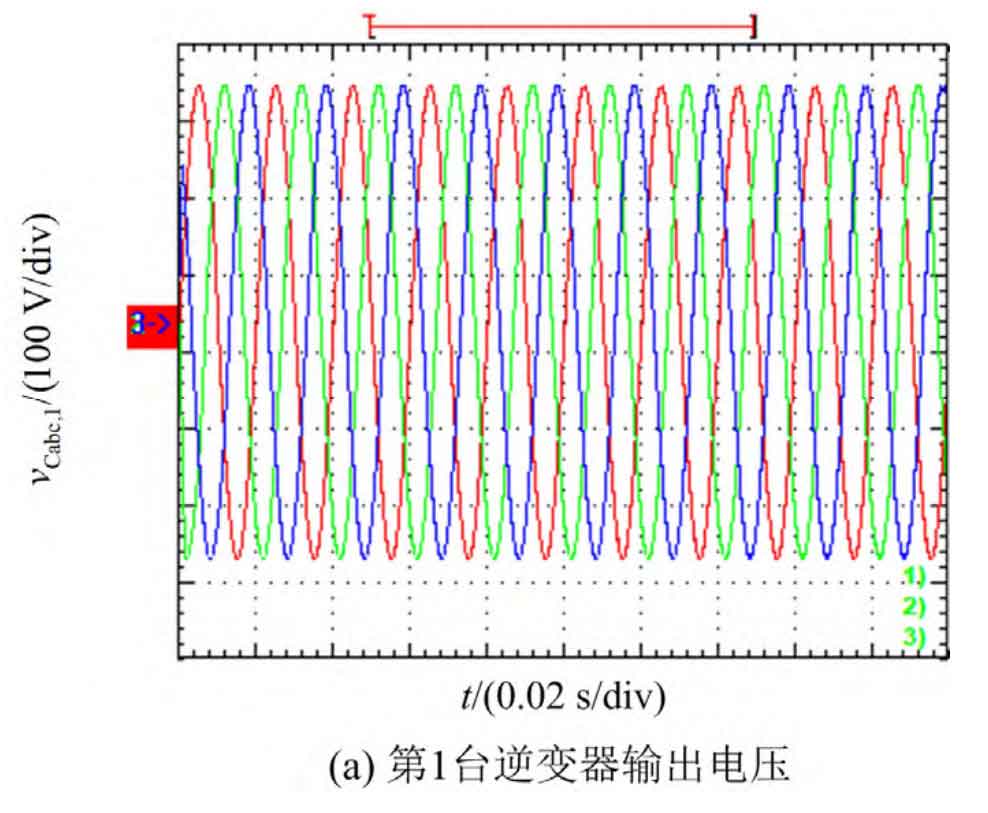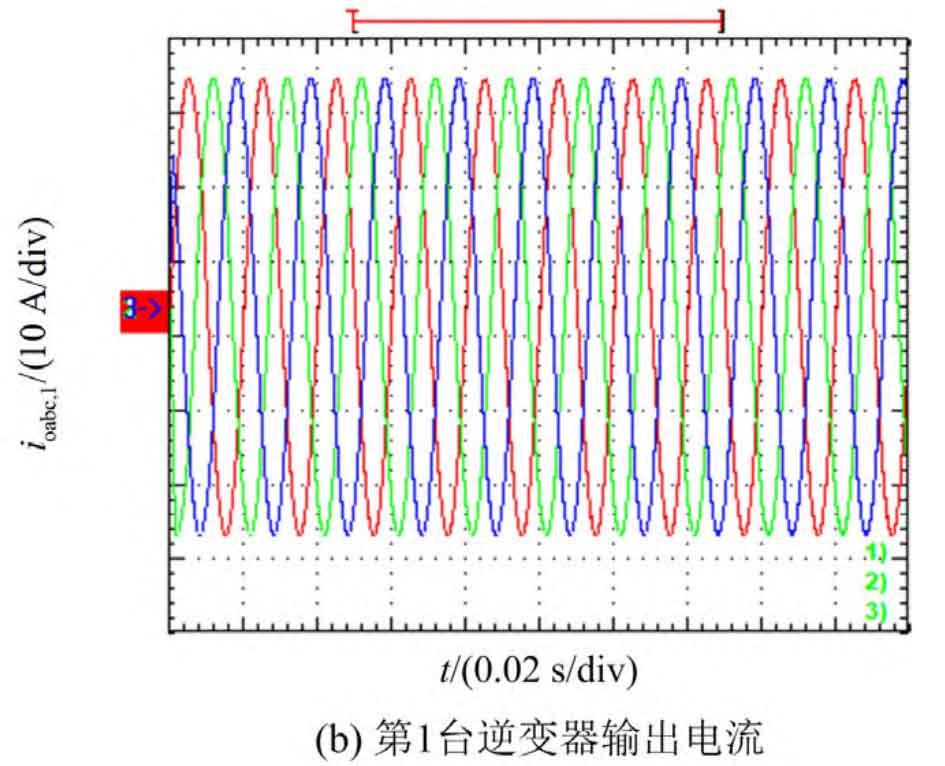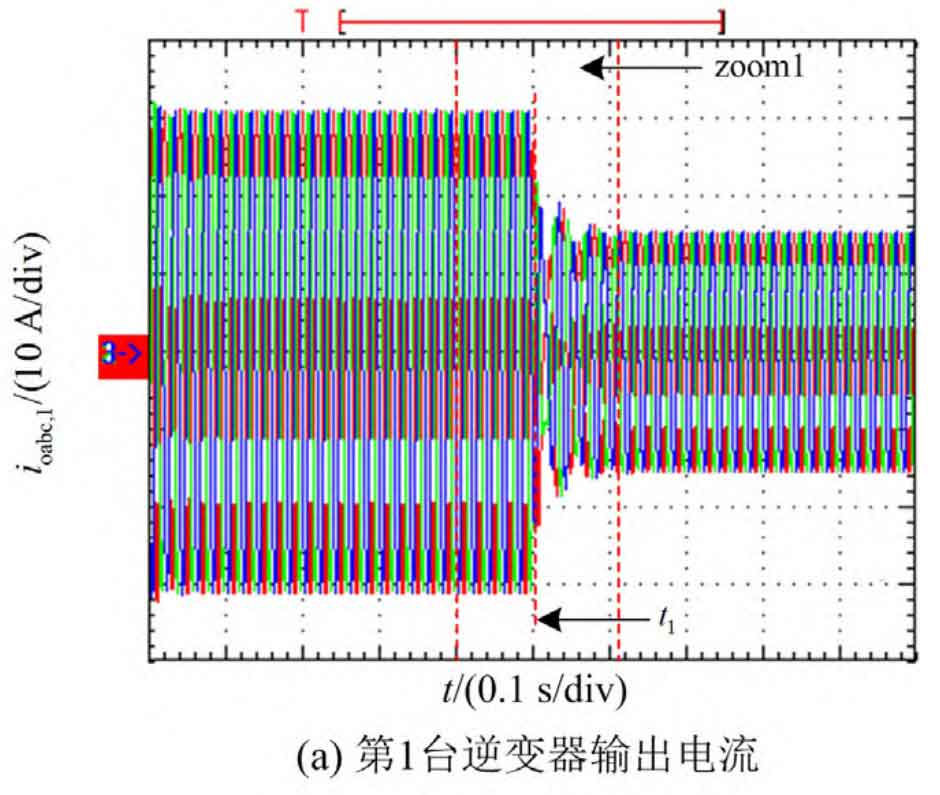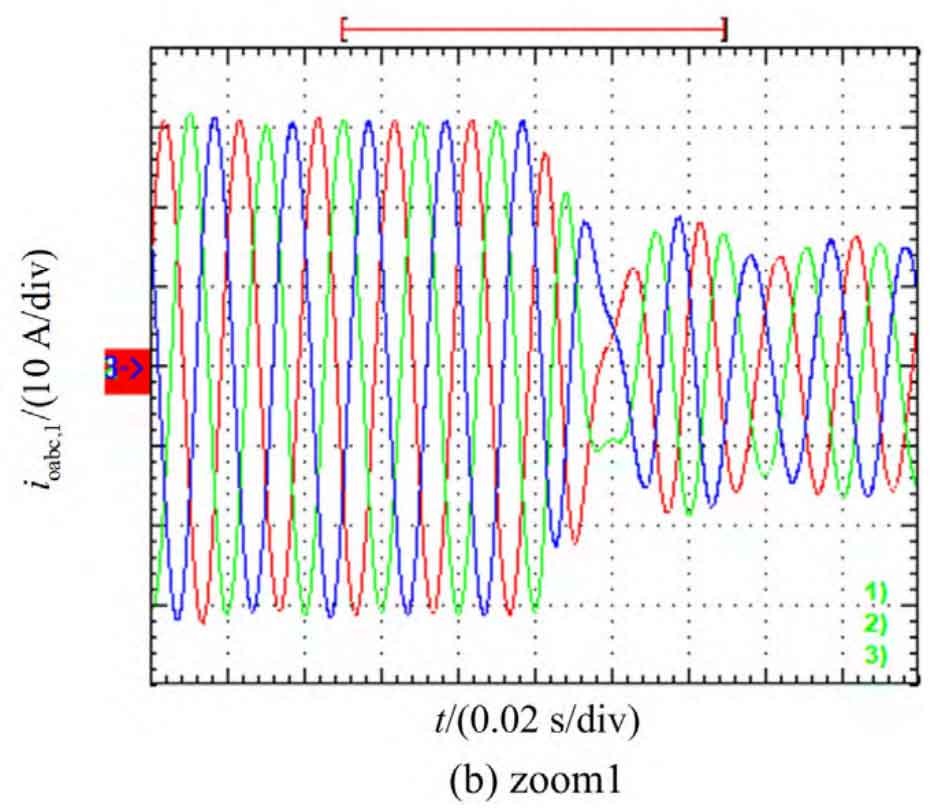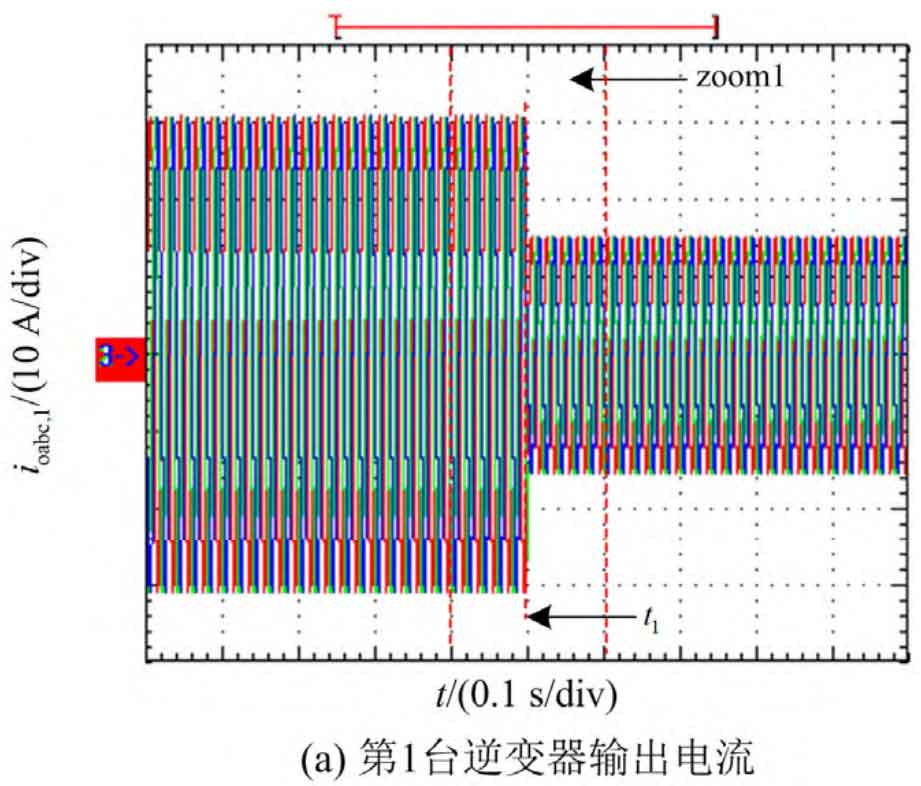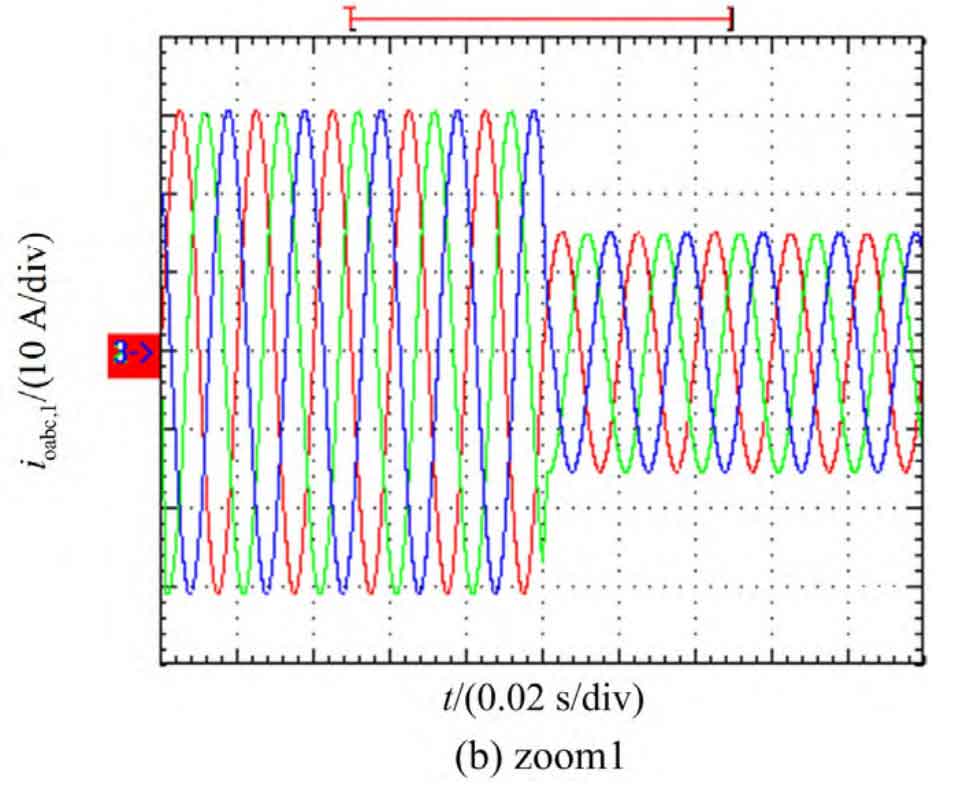In recent years, the depletion of fossil fuel reserves and severe environmental pollution have led to an increasing penetration rate of distributed power generation, mainly based on renewable energy, in the power system. Among them, distributed photovoltaics, as a power generation method that can be developed and consumed locally, have received widespread attention due to their inexhaustible and low operating and maintenance costs. Therefore, studying the distributed solar photovoltaic parallel inverter system in islanding mode is of great significance.
The traditional control strategies commonly used in solar photovoltaic parallel inverter systems mainly include instantaneous current sharing control, droop control, and power sharing control. The instantaneous current sharing control method achieves load balancing by correcting the output current of each solar photovoltaic inverter. The droop control strategy achieves load sharing by adjusting the frequency and voltage amplitude of each solar photovoltaic inverter. Power sharing control uses the average power of all inverters to adjust the reference voltage of each solar photovoltaic inverter, in order to achieve power sharing among each solar photovoltaic inverter. Although the traditional control strategies mentioned above have good power sharing performance, the controller has poor anti-interference ability, low reliability, and power sharing performance comes at the cost of sacrificing system stability margin.
In recent years, numerous scholars have conducted extensive research to optimize the traditional control strategies applied to solar photovoltaic parallel inverter systems. To improve the reliability of the droop control strategy, an integral lead correction link is used to optimize the secondary frequency regulation stabilizer, so that the droop secondary frequency regulation can be achieved between various solar photovoltaic inverters without communication, eliminating the frequency static error of the system. A improved droop control strategy with the introduction of virtual impedance is proposed. The negative resistive part of virtual impedance is introduced to reduce the resistive component of the line, while the inductive part of virtual impedance increases the inductive component of the system, weakens the coupling degree of power, and improves the accuracy of power distribution and the effect of circulating current suppression. A simplified control strategy was designed to consider the unavailability of filtering capacitor voltage and grid connected current information for solar photovoltaic inverters, which can effectively improve system reliability.
In response to the issue of high control delay caused by rule sampling affecting the effectiveness of circulating current suppression, the multiple sampling mode is combined with the circulating current suppression controller to improve the stability margin and control bandwidth of the controller. Without adding additional hardware and power losses, the impact of sampling delay on the effectiveness of circulating current suppression is reduced. A bias voltage injection carrier pulse width modulation method for circulating current suppression is proposed, which uses the bias voltage generated by the proportional resonance controller to correct the modulation signal and synchronize the switching tubes at the same position of each solar photovoltaic inverter, thereby suppressing circulating current between solar photovoltaic inverters. By incorporating virtual impedance into the control loop and utilizing an adaptive parameter controller based on Lyapunov function to improve traditional droop control, the power sharing accuracy of the controller under complex operating conditions is improved. The above control strategies not only improve the reliability of traditional controllers, but also improve the accuracy of power sharing in the system. However, they do not take into account the effects of filter parameter perturbations, dynamic changes in the input and output operation of solar photovoltaic inverters on the system.
Due to the presence of filter parameter perturbations and other unknown disturbances, the solar photovoltaic parallel inverter system is a nonlinear system, and corresponding nonlinear control strategies such as model predictive control, sliding mode control, backstepping control, fuzzy control, etc. have been widely studied. The use of model predictive control maintains the balance of the midpoint voltage on the DC side of the solar photovoltaic inverter while stabilizing the grid connected current. A sliding mode control method is proposed for LCL type grid connected inverters, which achieves stable control of grid connected current while considering filter parameter perturbations. By using a backstepping controller to stabilize the DC voltage of the solar photovoltaic inverter, the output power of the solar photovoltaic inverter is integrated into the grid at a unit power factor. Propose a proportional integral controller based on fuzzy logic controller optimization, and improve the robustness of solar photovoltaic inverters by optimizing the coefficients of the proportional integral controller through fuzzy logic controller. Although the above control strategy has improved the system performance to a certain extent, it stabilizes the entire system with asymptotic convergence speed in infinite time, and the dynamic performance of the controller is poor.
To improve the above control strategies, finite time control methods are receiving increasing attention. A control strategy combining finite time disturbance observer and finite time backstepping controller is proposed to improve the stability of DC-DC boost converters with nonlinear loads. To achieve stable control of constant power loads in DC-DC boost converters, a finite time fractional order terminal sliding mode control law was proposed in reference [28]. However, in the introduced control strategy, the upper limit of the controller’s stability time depends on the initial state of the system. A fixed time terminal sliding mode controller is proposed to stabilize the entire ship power grid by tracking the reference voltage of the DC bus within a fixed time. The overall convergence speed of the system is fast, and the convergence time is independent of the initial state of the system.
Taking inspiration from the above control strategies, this paper proposes a fixed time fuzzy backstepping control strategy applied to solar photovoltaic parallel inverter systems, which improves the dynamic performance of the system while solving the problem of filter parameter perturbation in solar photovoltaic parallel inverter systems.
1. System model

Figure 1 shows a typical topology diagram of a two-stage islanded parallel inverter system, consisting of a photovoltaic panel, a battery, a front-end DC-DC converter, a front-end bidirectional converter, and a back-end solar photovoltaic parallel inverter system. The solar photovoltaic parallel inverter system consists of n parallel three-phase two-level inverter units. Each solar photovoltaic inverter is connected to the load separately through an LC filter. LC filters are used to eliminate high-order harmonics generated inside solar photovoltaic inverters. Assuming that the fluctuation of DC bus voltage is bounded, the equivalent circuit diagram of the first solar photovoltaic inverter is shown in Figure 2.
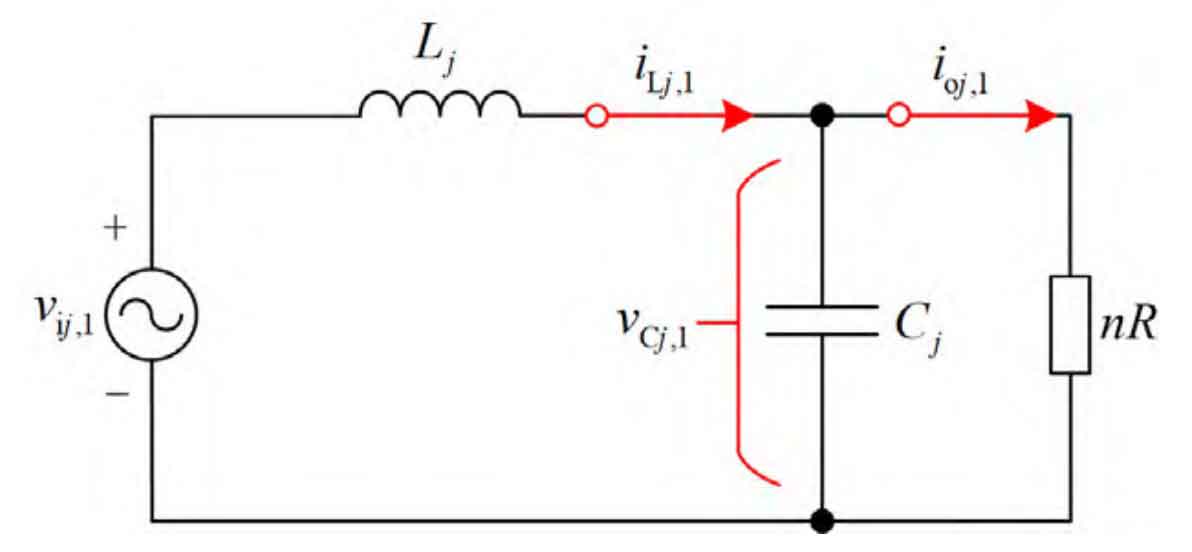
Based on Figure 2 and KCL and KVL, the mathematical model of the solar photovoltaic inverter can be obtained, as shown in the formula.
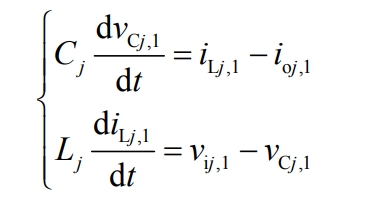
In the formula: vC, 1j, iL, 1j, io, 1j, vi, 1j respectively represent the capacitor voltage of the solar photovoltaic inverter, the inductance current on the solar photovoltaic inverter side, the output current on the load side, and the output voltage on the solar photovoltaic inverter side; Cj and Lj are the filtering inductance and filtering capacitance of the solar photovoltaic inverter, respectively; J represents phases a, b, and c. Select the capacitance voltage and its derivative as the state variables, and the system’s state equation is shown in the formula.

In the formula, j u is the modulation signal of the solar photovoltaic inverter, which is the control input signal of the system, and Vdc is the DC bus voltage. Due to the fact that the parameters of the filtering inductance and filtering capacitance of the solar photovoltaic parallel inverter system are easily affected by factors such as temperature and aging during actual operation; The DC bus voltage fluctuates; During the dynamic process of input and output of solar photovoltaic inverters, there is a significant instantaneous change in the output current on the load side. Assuming that the parameters of the filtering inductance and filtering capacitance change to L ‘and C’ respectively, and the DC bus voltage fluctuates to Vdc ‘, and the output current on the load side is treated as a disturbance. At this time, the state equation of the system is:
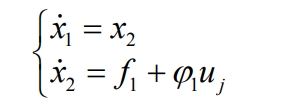
In the formula, f1 φ 1 is a smoothing unknown nonlinear function,. Due to the bounded perturbation of filter parameters and the bounded fluctuation of DC bus voltage, there exists φ 1>, so that φ_ 1 < φ 1 Heng is established.
2. Simulation and experimentation
To verify the effectiveness of the control strategy proposed in this article, two solar photovoltaic parallel inverters were first built on the Matlab/Simulink simulation platform for simulation verification. Then, experimental verification was conducted on two 20 kW experimental prototypes. The simulation and experimental parameters are shown in Table. Based on the above theoretical analysis, the constant values in the controller are as follows: r1=30, a1=0.1 σ 1=1, c1=0.01 ε 1=0.001, K11=K12=10 ˆθ (0)=0.1.
| Parameters | Numerical value |
| Rated power Pnom/kW | 20 |
| Effective value of output voltage v * C. rms/V | 220 |
| DC bus voltage Vdc/V | 400 |
| Switching frequency fs/kHz | 20 |
| Filter inductance L/ μH | 660 |
| Filter capacitor C/ μF | 90 |
| Load R/Ω | 10 |
2.1 Simulation
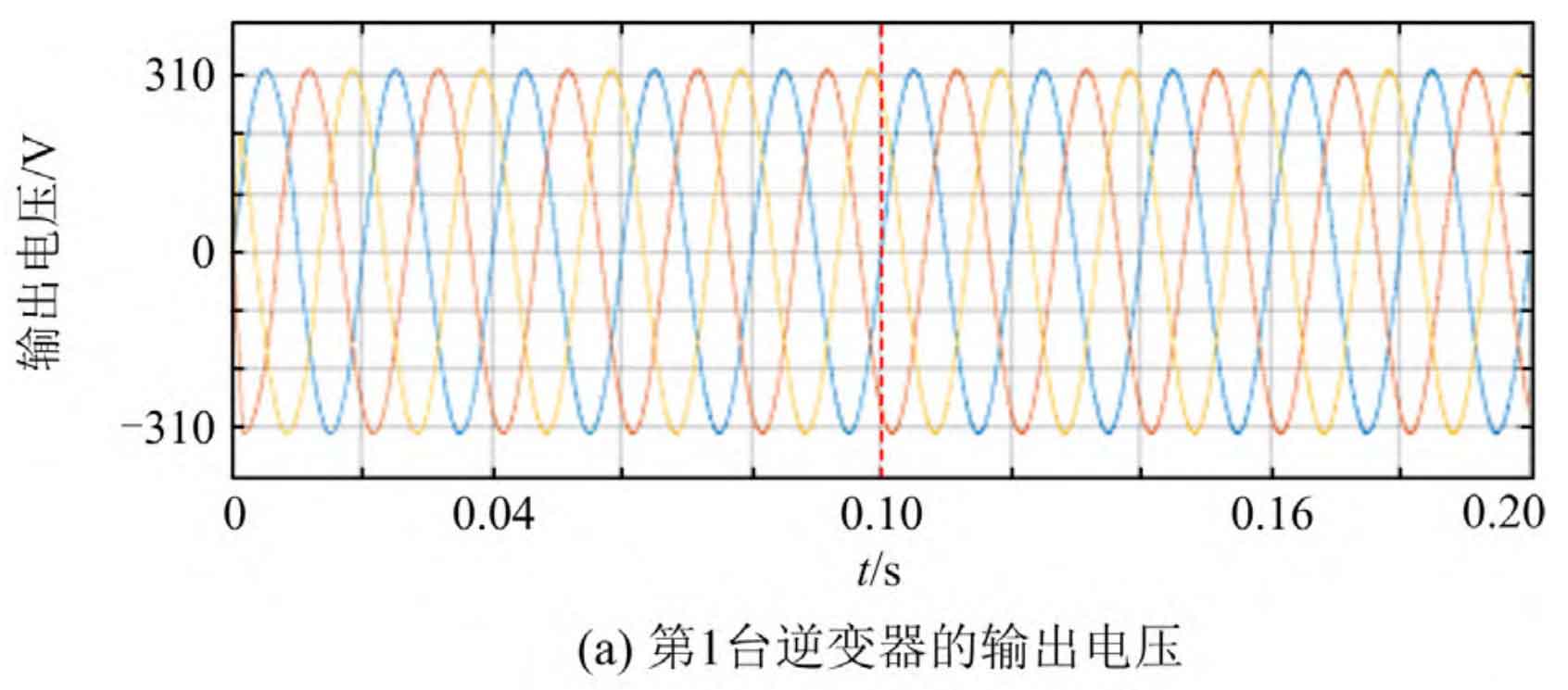

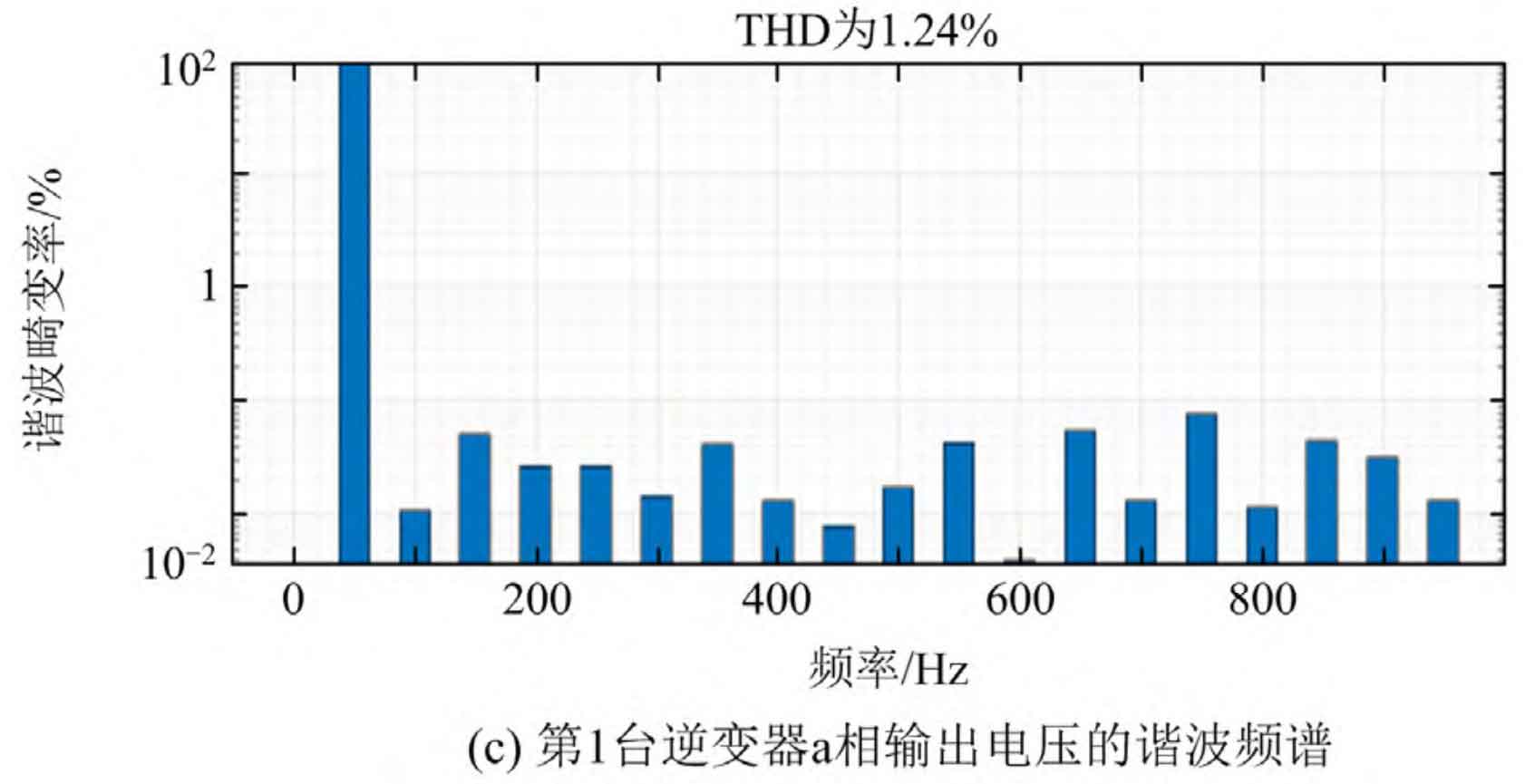
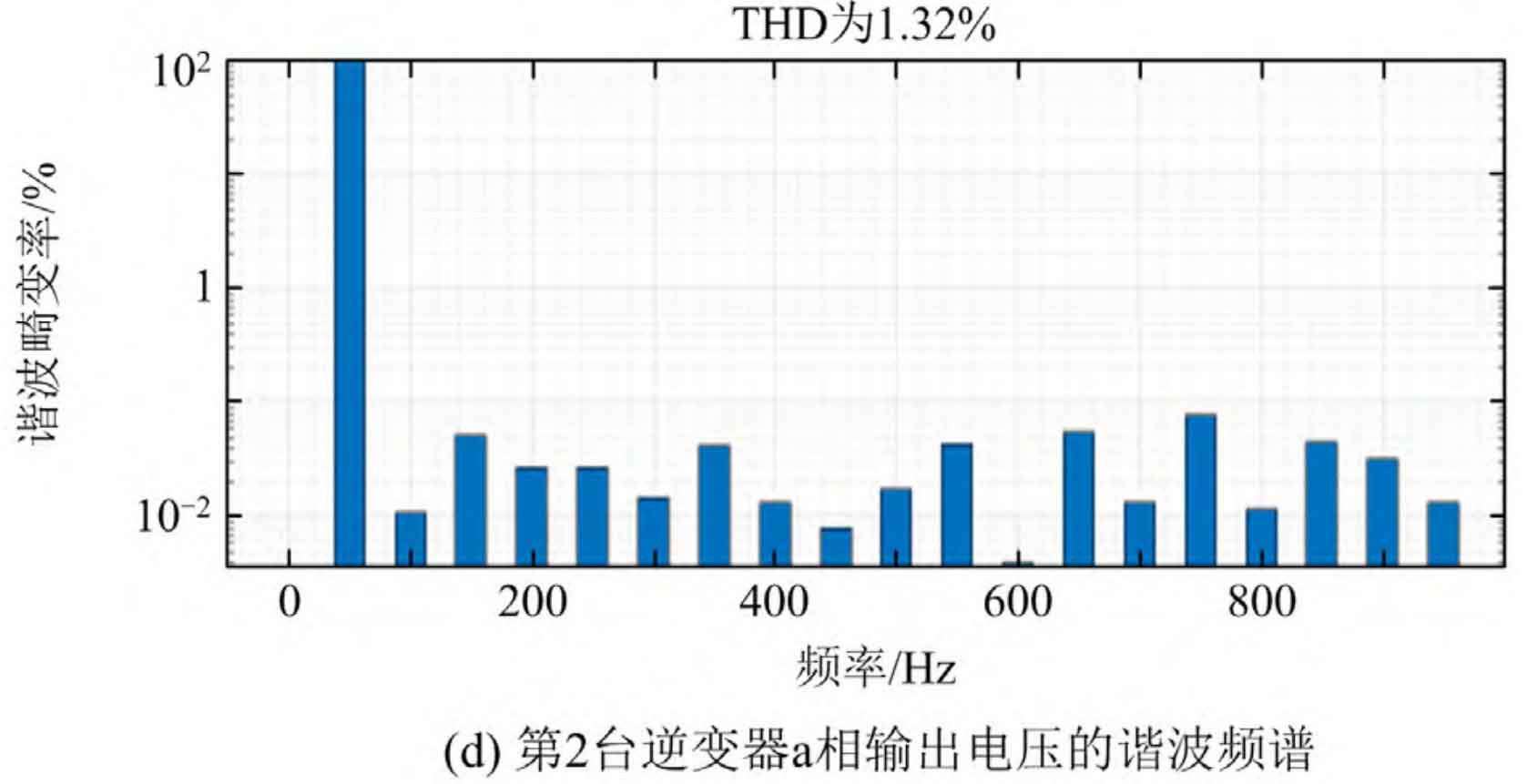
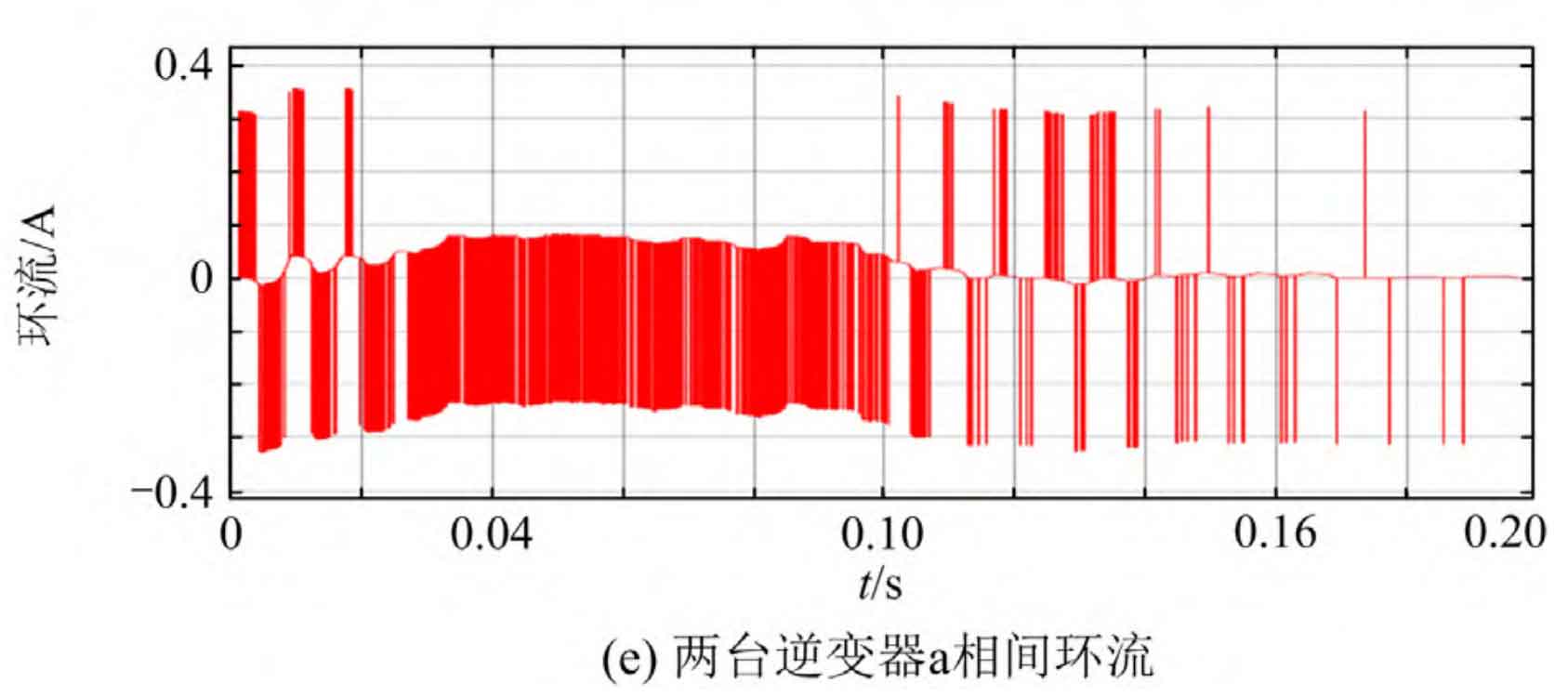
Figure 3 shows the simulation waveform of two solar photovoltaic parallel inverters under the proposed control strategy in the presence of filter parameter perturbations and DC bus voltage fluctuations. At t=0.1s, the DC bus voltage, solar photovoltaic inverter side inductance value, and grid side inductance value vary within 5% of the rated value, respectively. From Figure 3, it can be seen that under the proposed control strategy, the output voltage waveforms of the two solar photovoltaic inverters are smooth, with low THD, and can effectively suppress the circulating current between the two solar photovoltaic inverters.
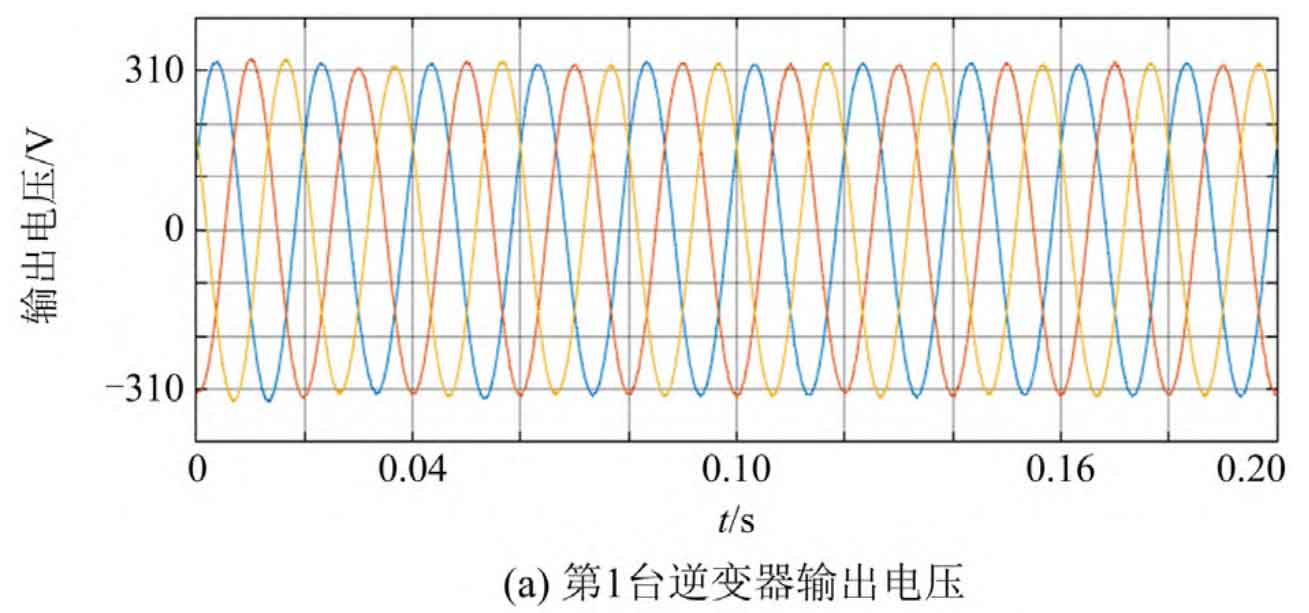

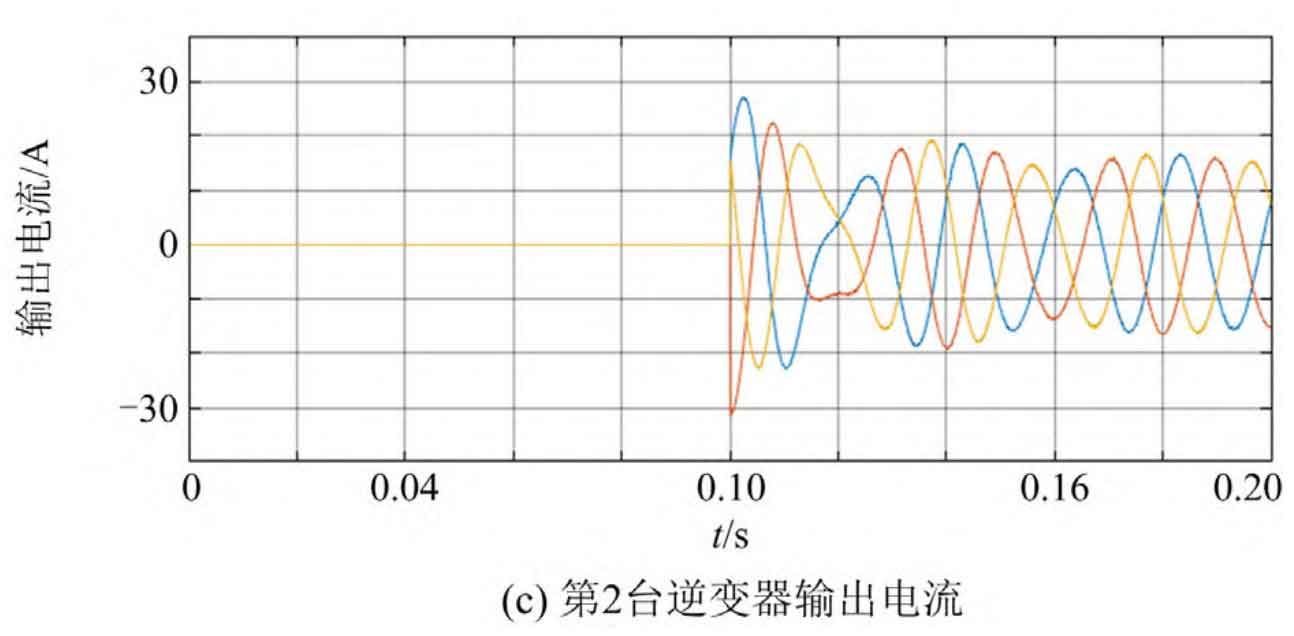
To verify the dynamic performance of the proposed control strategy, the simulation results under the fuzzy backstepping control strategy will be compared with the simulation results under the proposed fixed time fuzzy backstepping strategy. Firstly, the first solar photovoltaic inverter of the solar photovoltaic parallel inverter system operates independently, and then the second solar photovoltaic inverter is put into operation at 0.1 seconds. Figures 4 and 5 show the simulation waveforms of the above operating mode under the fuzzy backstepping control strategy and the proposed control strategy, respectively. From Figures 4 and 5, it can be seen that under the proposed control strategy, the solar photovoltaic parallel inverter system can quickly respond to changes in operating mode and has good dynamic performance.
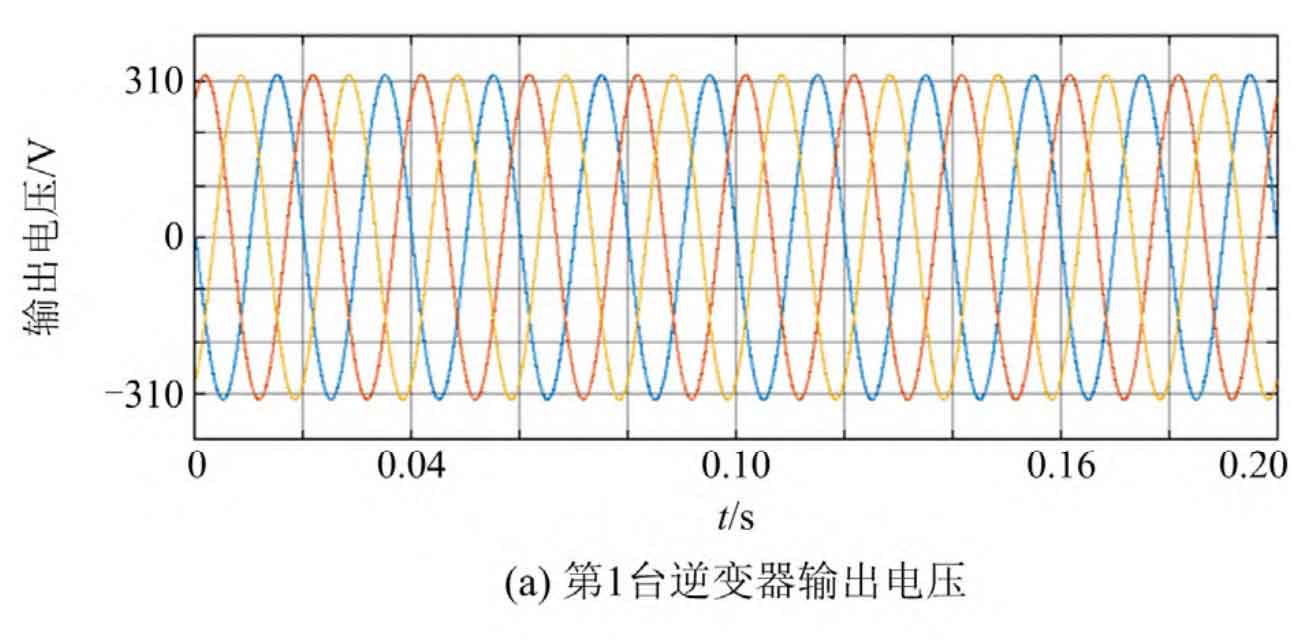
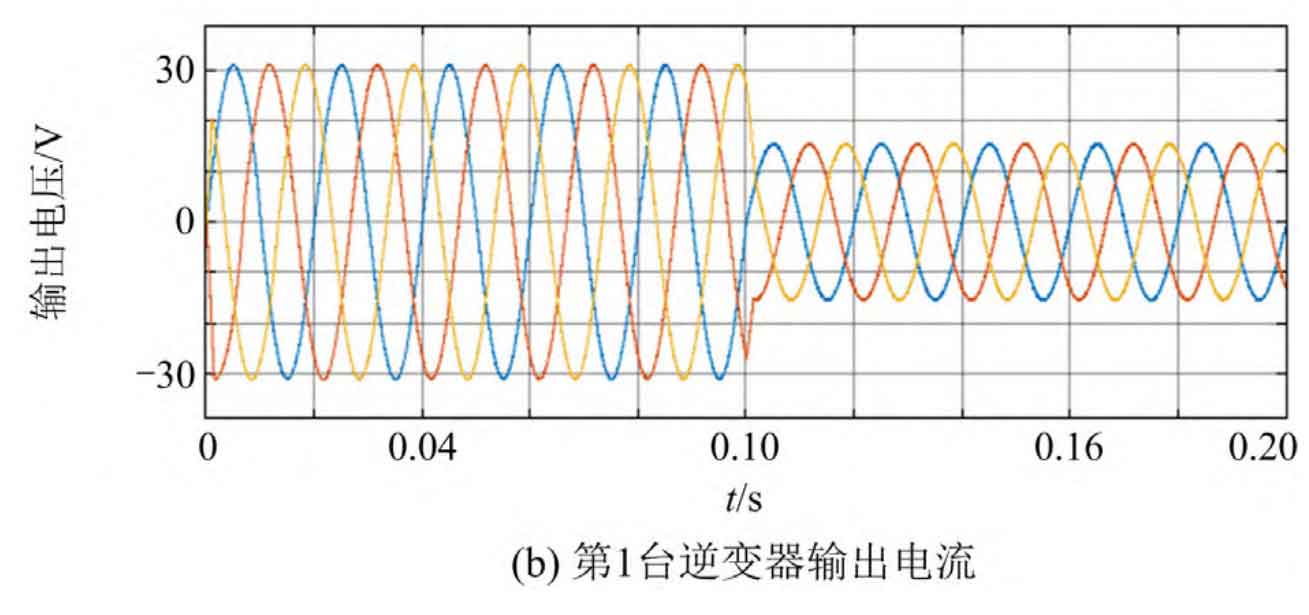
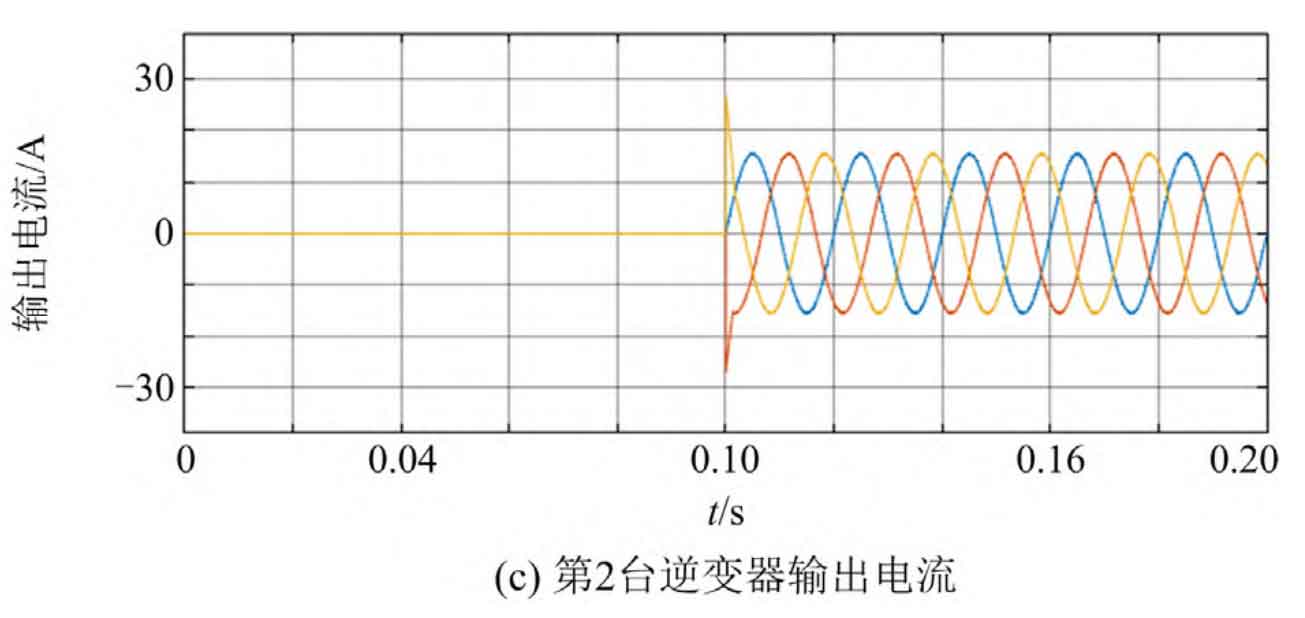
2.2 Experiment
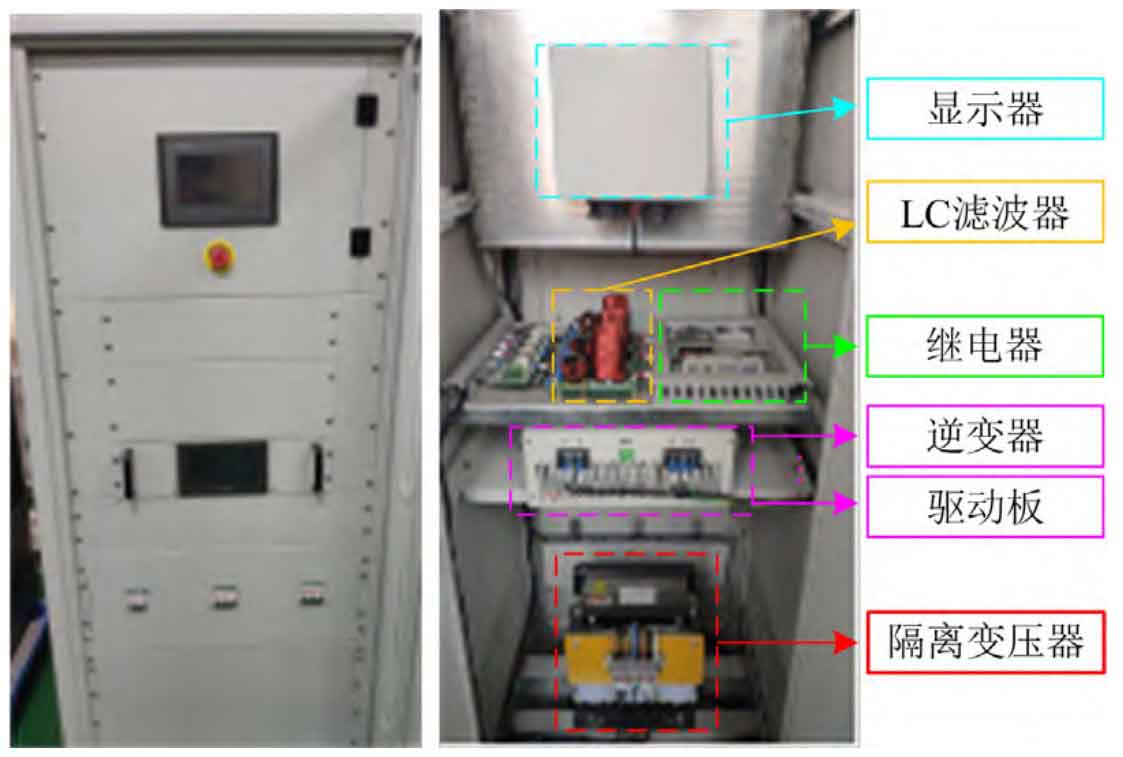
The experimental platform consists of two parallel three-phase two-level inverters, with the main control chip being DSP TMS320F28335 and the switching frequency of the converter being 20 kHz. The experimental parameters are shown in Table 1, and the prototype is shown in Figure 6.
Figure 7 shows the experimental waveforms of two three-phase inverters connected in parallel with solar photovoltaics during steady-state operation. Figure 7 (c) shows the circulating current waveforms between two solar photovoltaic inverters a, b, and c from top to bottom. From Figure 7, it can be seen that the solar photovoltaic parallel inverter system using the proposed control strategy has good power sharing performance during steady-state operation, which can suppress the circulating current between two solar photovoltaic inverters.
In order to verify the dynamic performance of the proposed control strategy, a comparative analysis was conducted on the experimental results of the solar photovoltaic parallel inverter under the proposed control strategy and the fuzzy backstepping control strategy. Firstly, when the first solar photovoltaic inverter of the solar photovoltaic parallel inverter system operates independently, the second solar photovoltaic inverter is put into operation at t1. Figures 8 and 9 show the output current waveforms of the first solar photovoltaic inverter under the fuzzy backstepping control strategy and the proposed control strategy, respectively. Figure 8 (b) and Figure 9 (b) are local magnified images of the local area zoom1 in Figure 8 (a) and Figure 9 (a), respectively. From Figures 8 and 9, it can be seen that under the proposed control strategy, the solar photovoltaic parallel inverter system can quickly respond to changes in operating mode and has good dynamic performance.
3. Conclusion
This paper proposes a fixed time fuzzy backstepping control strategy to address the issues of filter parameter perturbation and poor dynamic performance in solar photovoltaic parallel inverter systems. By establishing an equivalent model of a single solar photovoltaic inverter with unknown terms, the design process of the proposed control strategy is elaborated in detail, and it is proved that the system is fixed time stable. Through the simulation and experiment of steady-state and dynamic under fuzzy backstepping control and the proposed control strategy, the following conclusions can be drawn:
1) The proposed control strategy takes into account the effects of filter parameter perturbations and DC bus voltage fluctuations, improving the robustness of the system;
2) Under the proposed control strategy, for parallel operating inverter systems, when a solar photovoltaic inverter is put into or cut out of the parallel system, the remaining solar photovoltaic inverters can quickly respond to changes in operating mode, and the upper limit of the stability time of each solar photovoltaic inverter is independent of the initial state of the system, improving the dynamic performance of the system.

